Simulation Analysis of Daylight Characteristics and Cooling Load Based on Performance Test of Covering Materials Used in Smart Farms
Abstract
:1. Introduction
Background and Study Objectives
2. Theory
2.1. Types of Covering Materials for Smart Farms
2.2. Test Standards and Methods for Single-Component Covering Material
2.3. Test Standard and Methods of Composite Covering Material
2.4. International Standards of Greenhouse Design
2.5. Light Saturation and Light Compensation Level
2.6. Overview of Simulation Program and Algorithm for Light Environment Analysis
3. Research Methodology
3.1. Experimental Setup
3.2. Simulation Modeling
3.2.1. Overview of the Study Building
3.2.2. Simulation Conditions
3.2.3. Simulation Variables
4. Results and Discussion
4.1. Result of Transmittance and Reflectivity Test Obtained by Covering Material
4.2. Result of Coefficient of Heat Transmission Test by Covering Material
4.3. Result of Daylight Characteristics Simulation for Covering Material
4.4. Result of Cooling Load Simulation by Covering Material
5. Conclusions
Author Contributions
Funding
Institutional Review Board Statement
Informed Consent Statement
Data Availability Statement
Conflicts of Interest
References
- Korea Technology & Information Promotion Agency for SMEs (TIPA). Technology Roadmap for SME 2019–2021; Korea Technology & Information Promotion Agency for SMEs (TIPA): Seoul, Korea, 2019. [Google Scholar]
- Kim, Y.J.; Park, J.Y.; Park, Y.G. An Analysis of the Current Status and Success Factors of Smart Farms; Korea Rural Economic Research Institute: Naju-si, Korea, 2016. [Google Scholar]
- Korea Rural Development Administration. A Casebook of Heat Loss Diagnosis in Agricultural Facilities; Korea National Institute of Agricultural Sciences: Wanju-gun, Korea, 2009.
- Korea Rural Development Administration. Guidelines for Smart Greenhouse Environment Management; Korea National Institute of Agricultural Sciences: Wanju-gun, Korea, 2018.
- Korea Ministry of Agriculture. Greenhouse Status of Facility Vegetables and Vegetable Production Performance in 2018; Korea Ministry of Agriculture: Gwacheon-si, Korea, 2019.
- Choi, Y.H.; Lee, J.H.; Park, D.K.; Kwon, J.K.; Um, Y.C. Effect of Greenhouse Cooling Method on the Growth and Yield of the Tomato cv. Momotaro in Warm Season. J. Bio-Environ. Control. 2000, 9, 60–65. [Google Scholar]
- Kwon, J.K.; Jeon, J.G.; Kim, S.H.; Kim, H.G. Application Effect of Heating Energy Saving Package on Venlo Type Glasshouse of Paprika Cultivation. The Korean Society For Bio-Environment Control. Prot. Hortic. Plant Fact. 2016, 25, 225–231. [Google Scholar] [CrossRef]
- Kim, Y.H.; Lee, S.G. A Simulation Model for the Analysis of Direct and Diffuse Solar Radiation in Glasshouse—Effect of orientation on the transmissivity of direct solar radiation in single-span glasshouse. The Korean Society For Bio-Environment Control. J. Bio-Environ. Control. 1997, 6, 176–182. [Google Scholar]
- Dewanto, H.; Yate, D.; Omer, S.A. Reducing greenhouse energy consumption using novelty rooftop: A simulation. In Proceedings of the 16th International Conference on Sustainable Energy Technologies—SET 2017, Bologna, Italy, 17–20 July 2017. [Google Scholar]
- Xu, J.; Li, Y.; Wang, R.Z.; Liu, W.; Zhou, P. Experimental performance of evaporative cooling pad systems in greenhouses in humid subtropical climates. Appl. Energy 2015, 138, 291–301. [Google Scholar] [CrossRef]
- Issam, M.A.; Hind, D. Enhancement of evaporative cooling system in a greenhouse using geothermal energy. Renew. Energy 2017, 111, 321–331. [Google Scholar]
- Lucas, M.; Valerie, O.; Lefsrud, M.G. An experimental study of the cooling performance and airflow patterns in a model Natural Ventilation Augmented Cooling (NVAC) greenhouse. Biosyst. Eng. 2018, 174, 173–189. [Google Scholar]
- Jeon, J.G.; Lee, D.G.; Paek, Y.; Kim, H.G. Study on Heating Performance of Hybrid Heat Pump System Using Geothermal Source and Solar Heat for Protected Horticulture. J. Korean Sol. Energy Soc. 2015, 35, 49–56. [Google Scholar] [CrossRef] [Green Version]
- Korean Standard. Testing Method on Transmittance and Emittance of Heat Glasses and Evaluation of Solar Heat Gain Coefficient; KS L 2514; Korean Standard: Seoul, Korea, 2011. [Google Scholar]
- Korean Standard. Evaluation on Thermal Resistance of Flat Glasses and Thermal Transmittance of Glazing; KS L 2525; Korean Standard: Seoul, Korea, 2006. [Google Scholar]
- Korean Standard. Adhesive Films for Glazings; KS L 2016; Korean Standard: Seoul, Korea, 2014. [Google Scholar]
- Korean Standard. Testing Method for the Determination of Solar Heat Gain Coefficient of Fenestration Product Using Solar Simulator; KS L 9107; Korean Standard: Seoul, Korea, 2014. [Google Scholar]
- Korean Standard. Mineral Wool Sheathing Boards; KS L 9106; Korean Standard: Seoul, Korea, 2015. [Google Scholar]
- American Society of Association Executives (ASAE) STANDARDS 2003. ASAE EP460 FEB04 Commercial Greenhouse Design and Layout; American Society of Agricultural Engineers: St. Joseph, MI, USA, 2004. [Google Scholar]
- American Society of Association Executives (ASAE) STANDARDS 2003. ANSI/ASAE EP406.4 JAN03 Heating, Ventilation and Cooling Greenhouses; American Society of Agricultural Engineers: St. Joseph, MI, USA, 2003. [Google Scholar]
- Albright, L.D. Environmental Control for Animals and Plants, ASHRAE Handbook-HAVC Applications; American Society of Agricultural Engineers: St. Joseph, MI, USA, 2011. [Google Scholar]
- National Greenhouse Manufactures Association (NGMA). Structural Design Manual; NGMA: Harrisburg, PA, USA, 2004.
- Korean Standard. Float and Polished Plate Glass; KS L 2012; Korean Standard: Seoul, Korea, 2013. [Google Scholar]
- Climate.OneBuilding.Org. Available online: http://climate.onebuilding.org (accessed on 8 July 2021).
- Castellano, S.; Santamaria, P.; Serio, F. Photosynthetic photon flux density distribution inside photovoltaic greenhouses, numerical simulation, and experimental results. Appl. Eng. Agric. 2016, 32, 861–869. [Google Scholar]

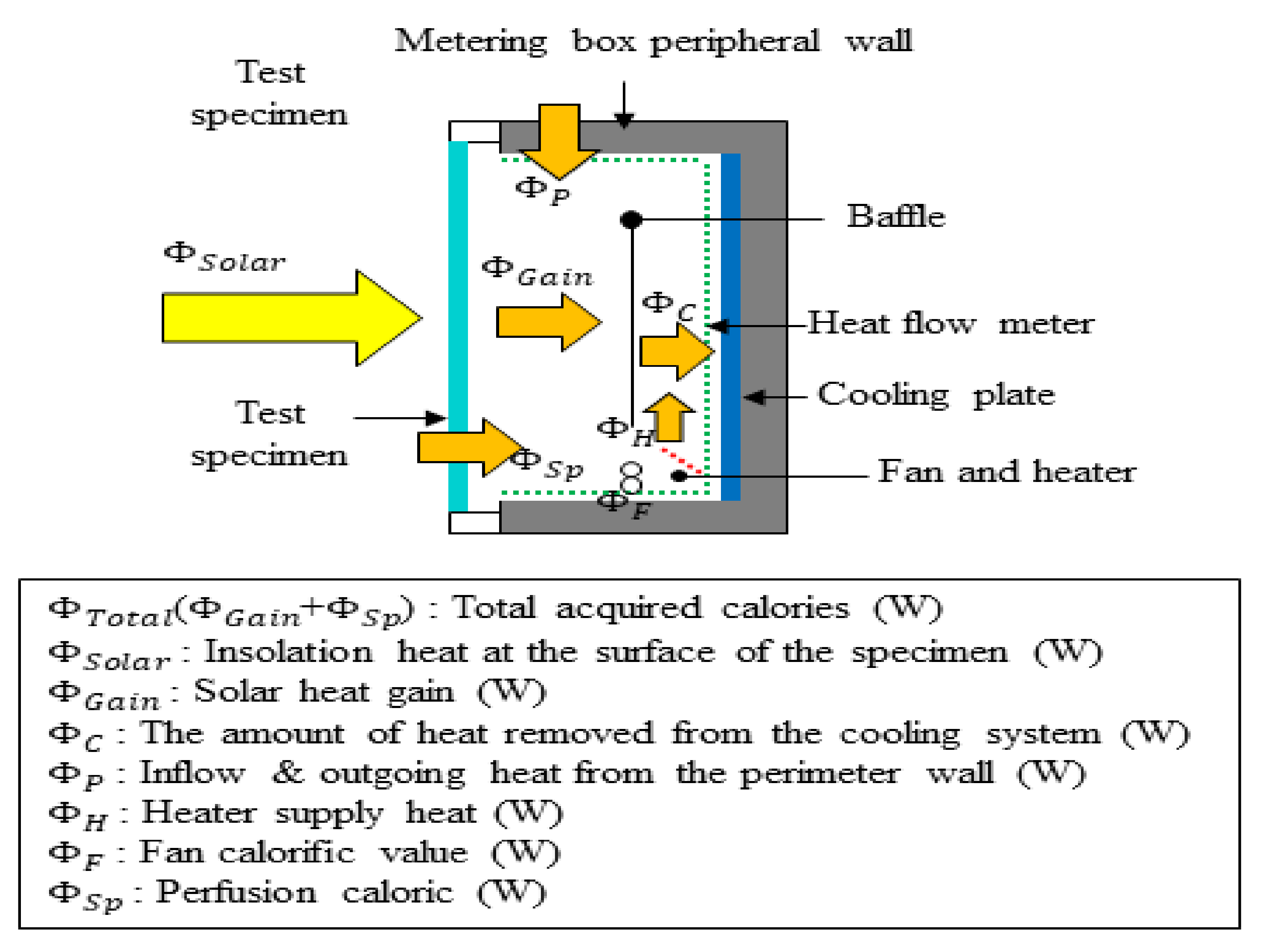
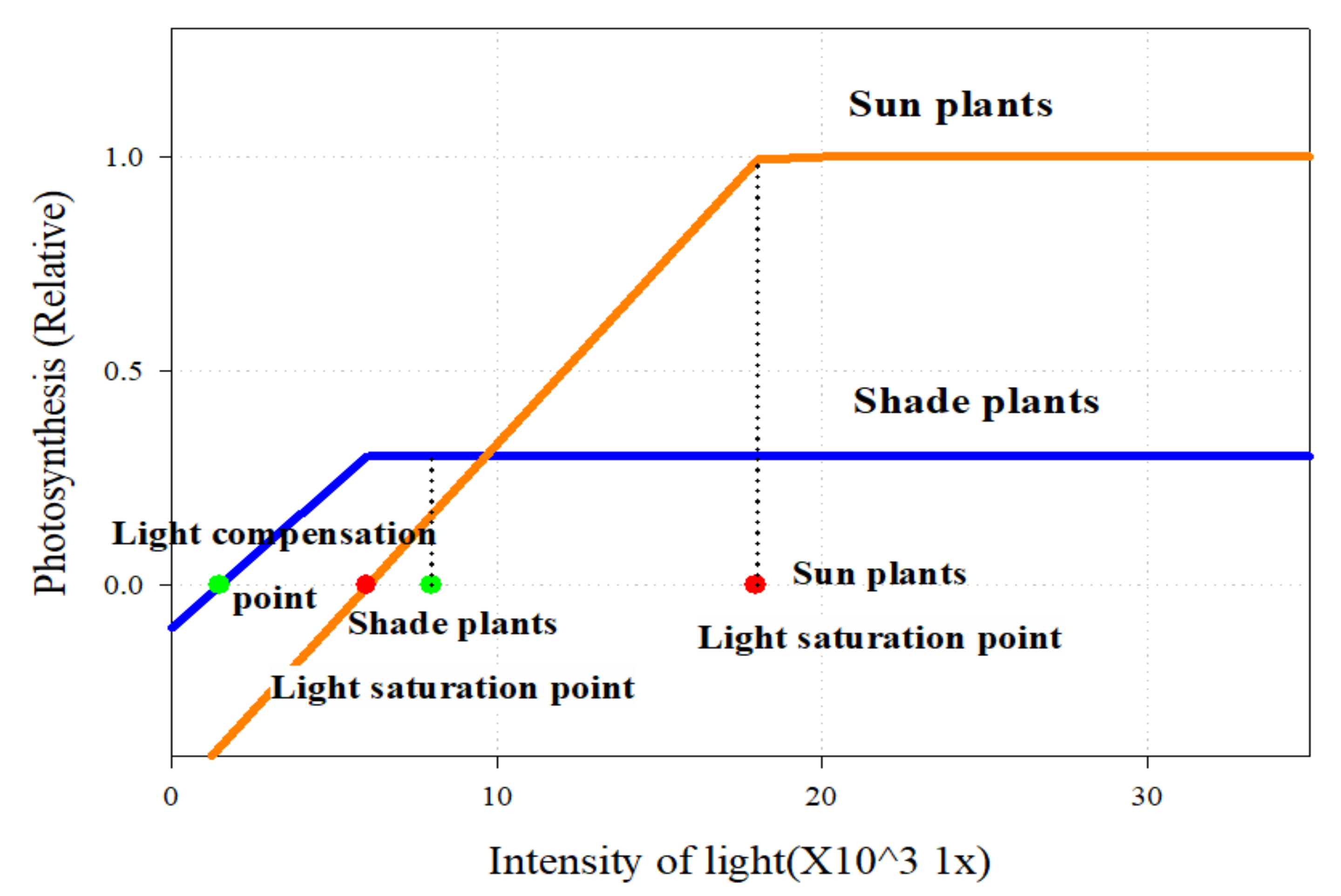

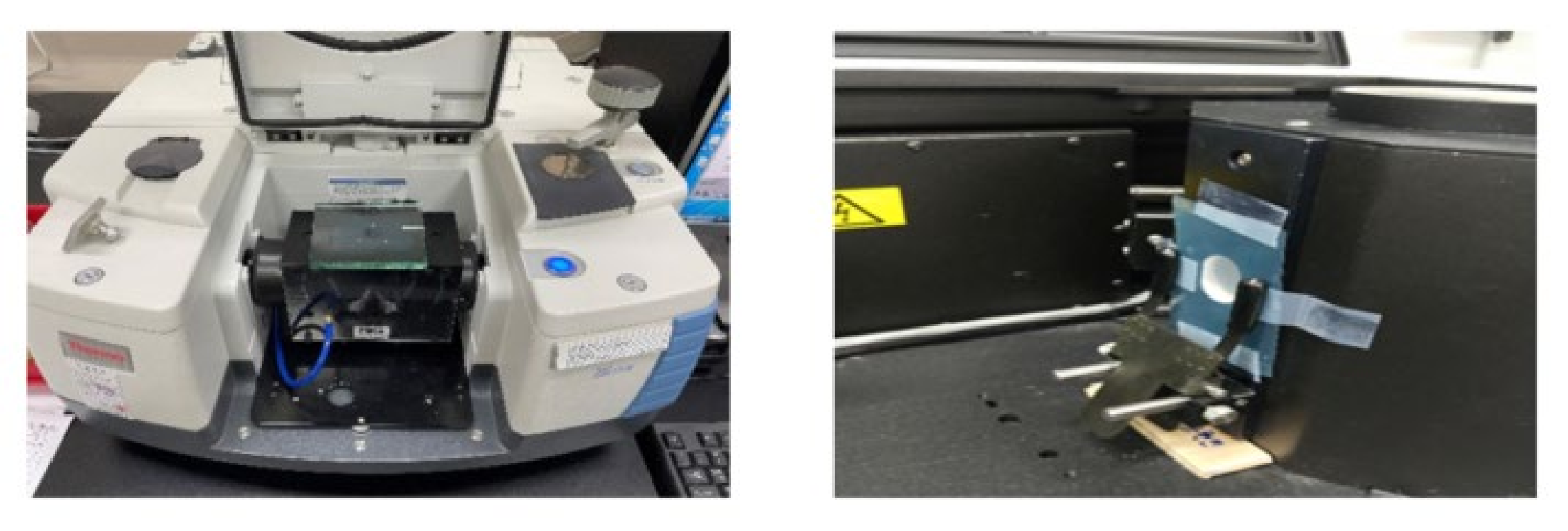
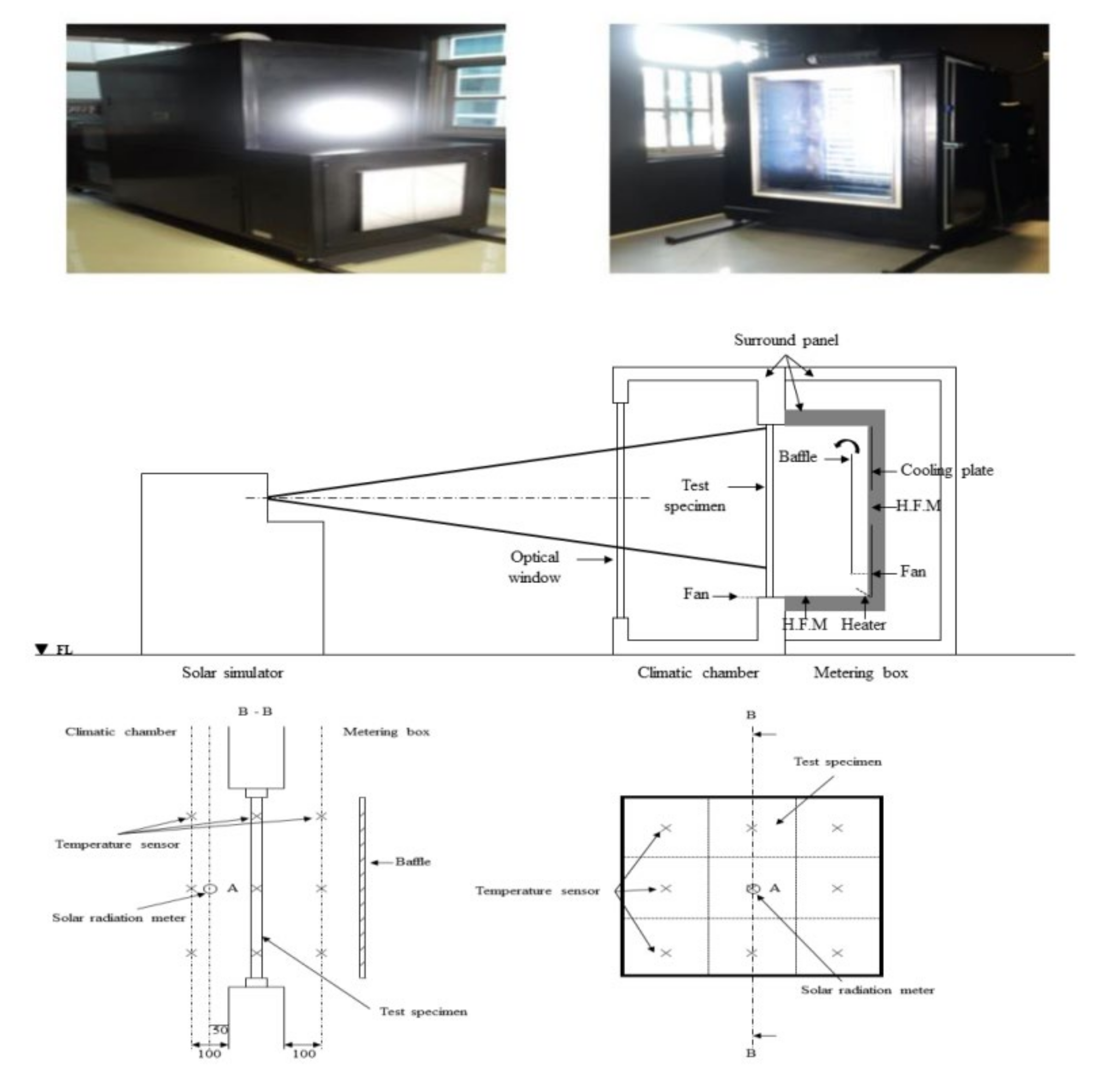

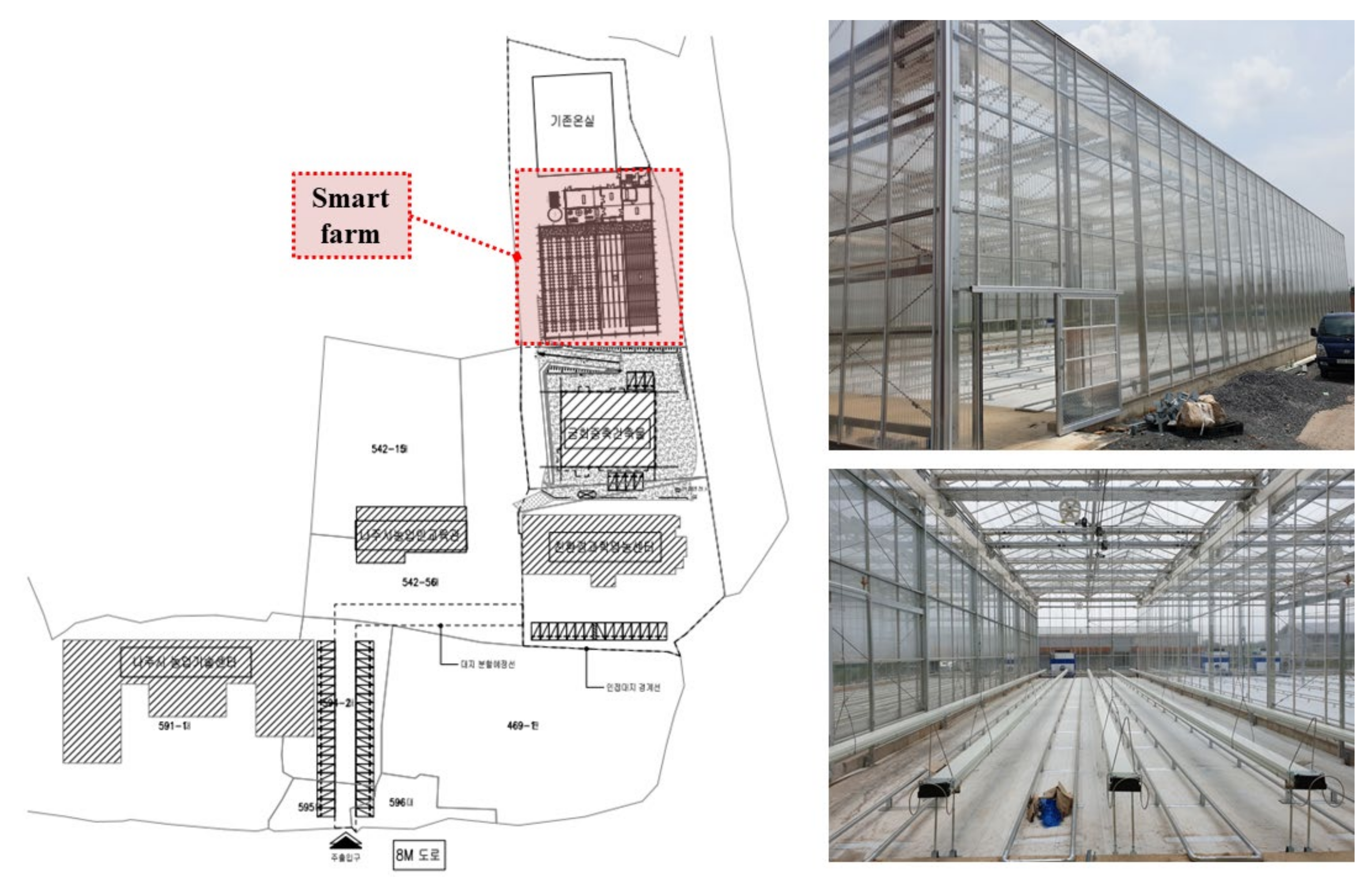

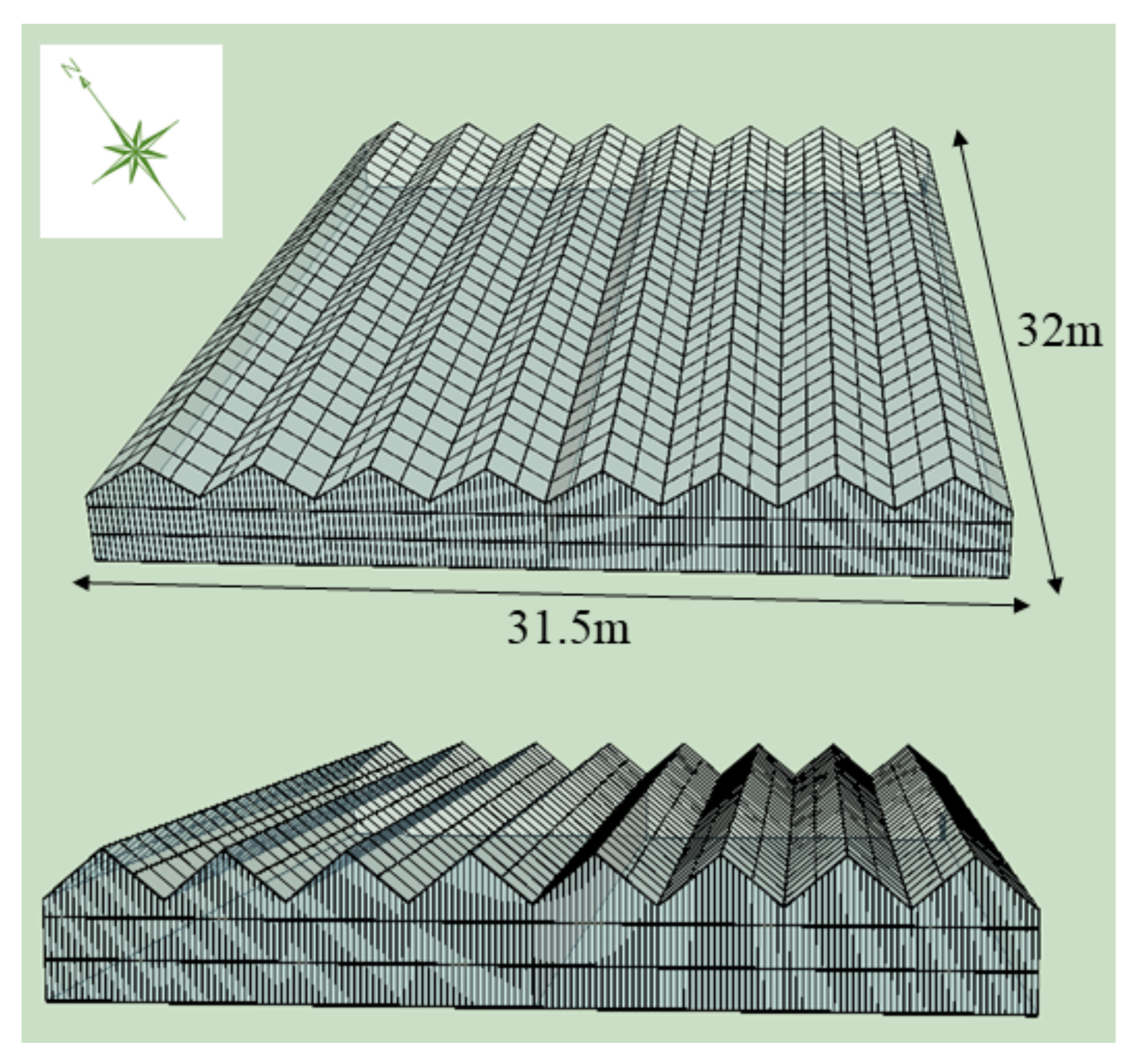
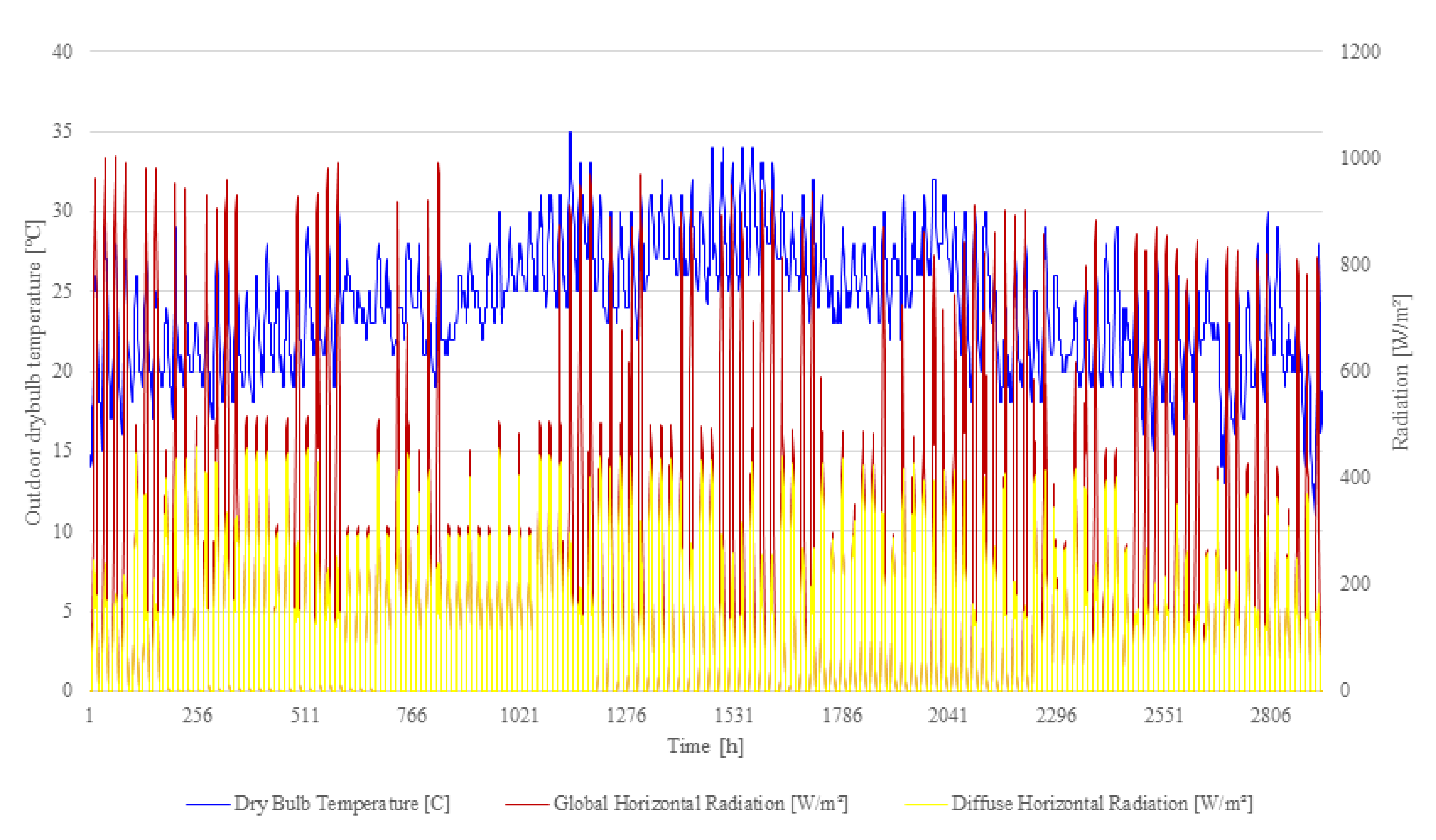
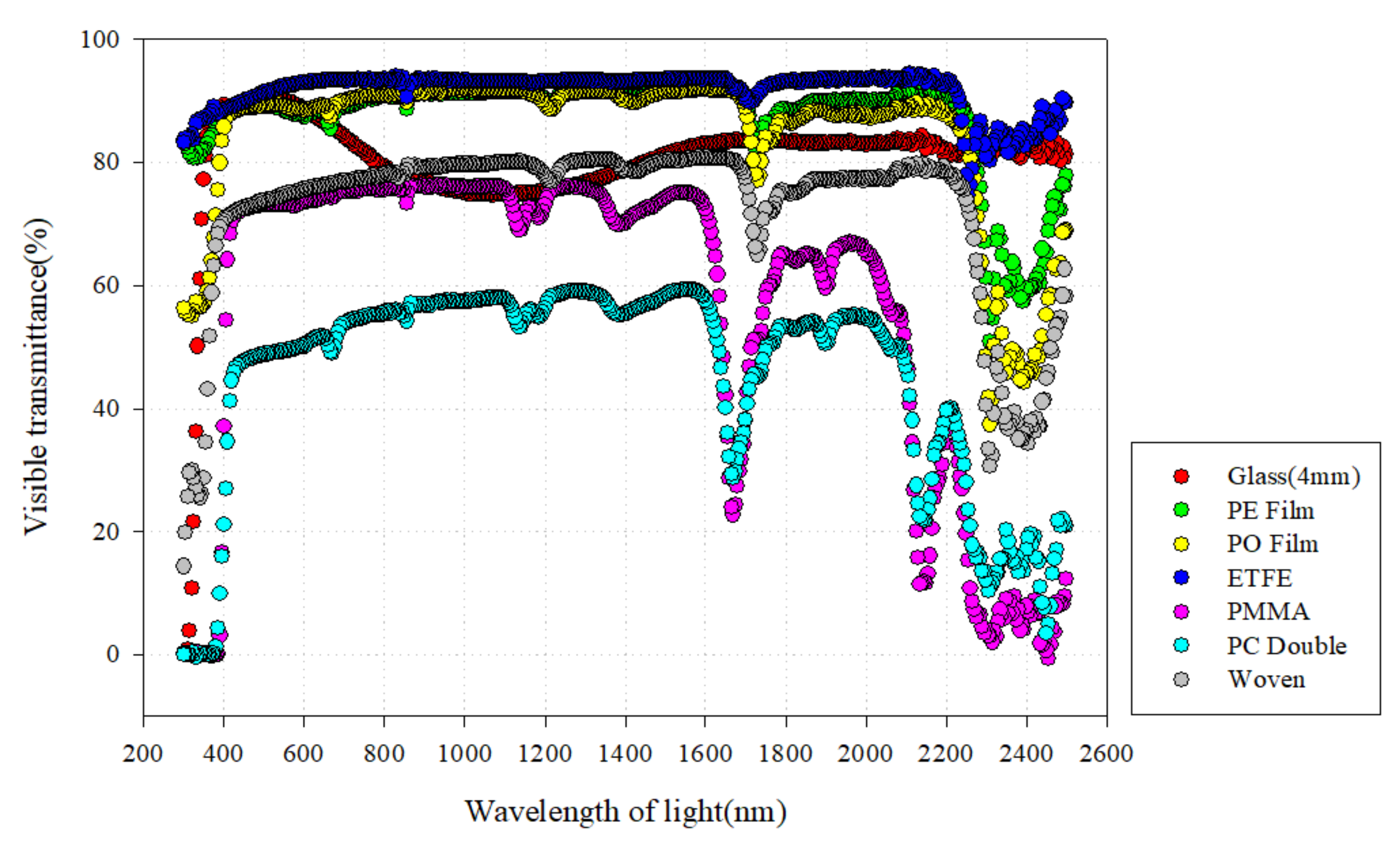
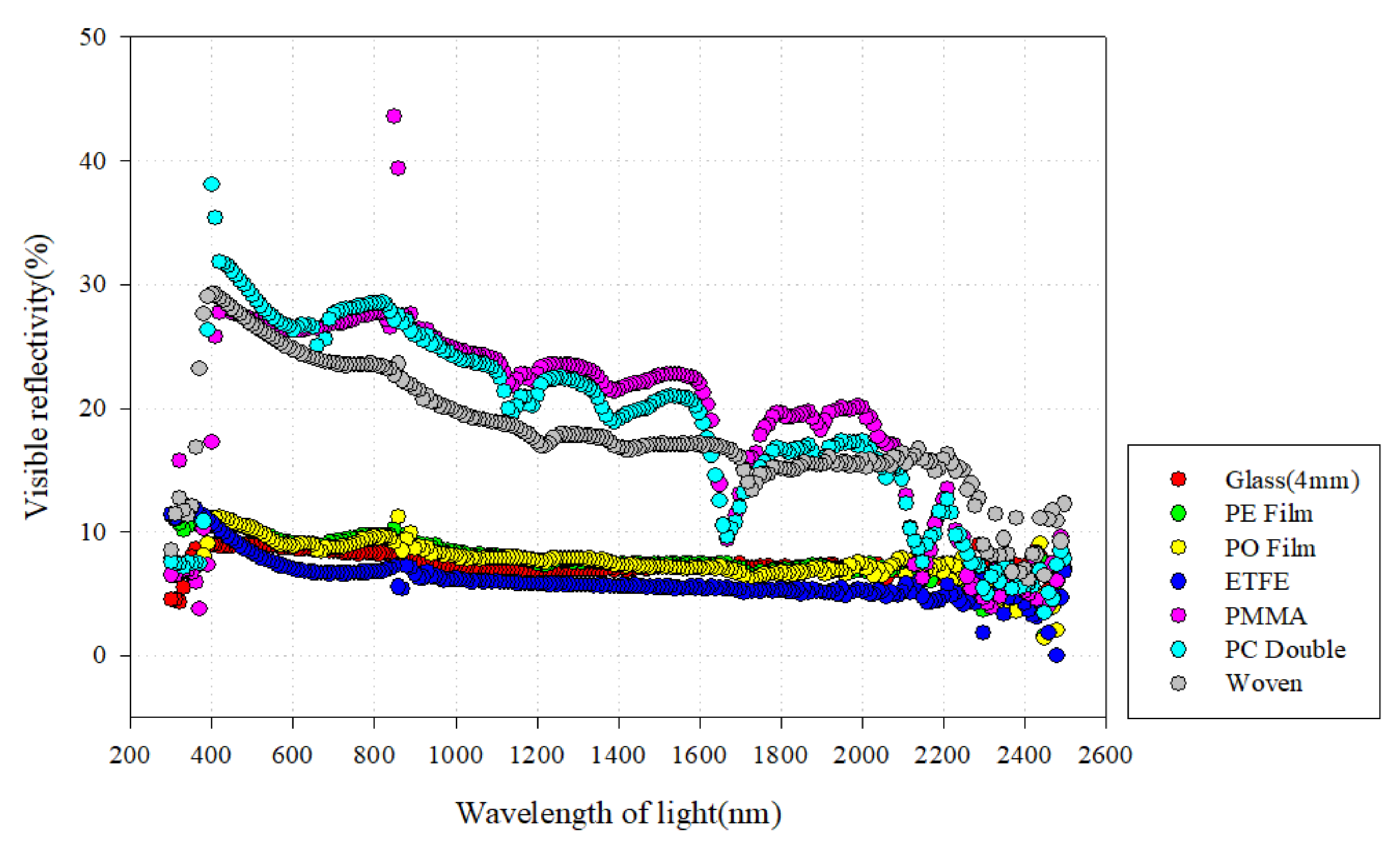
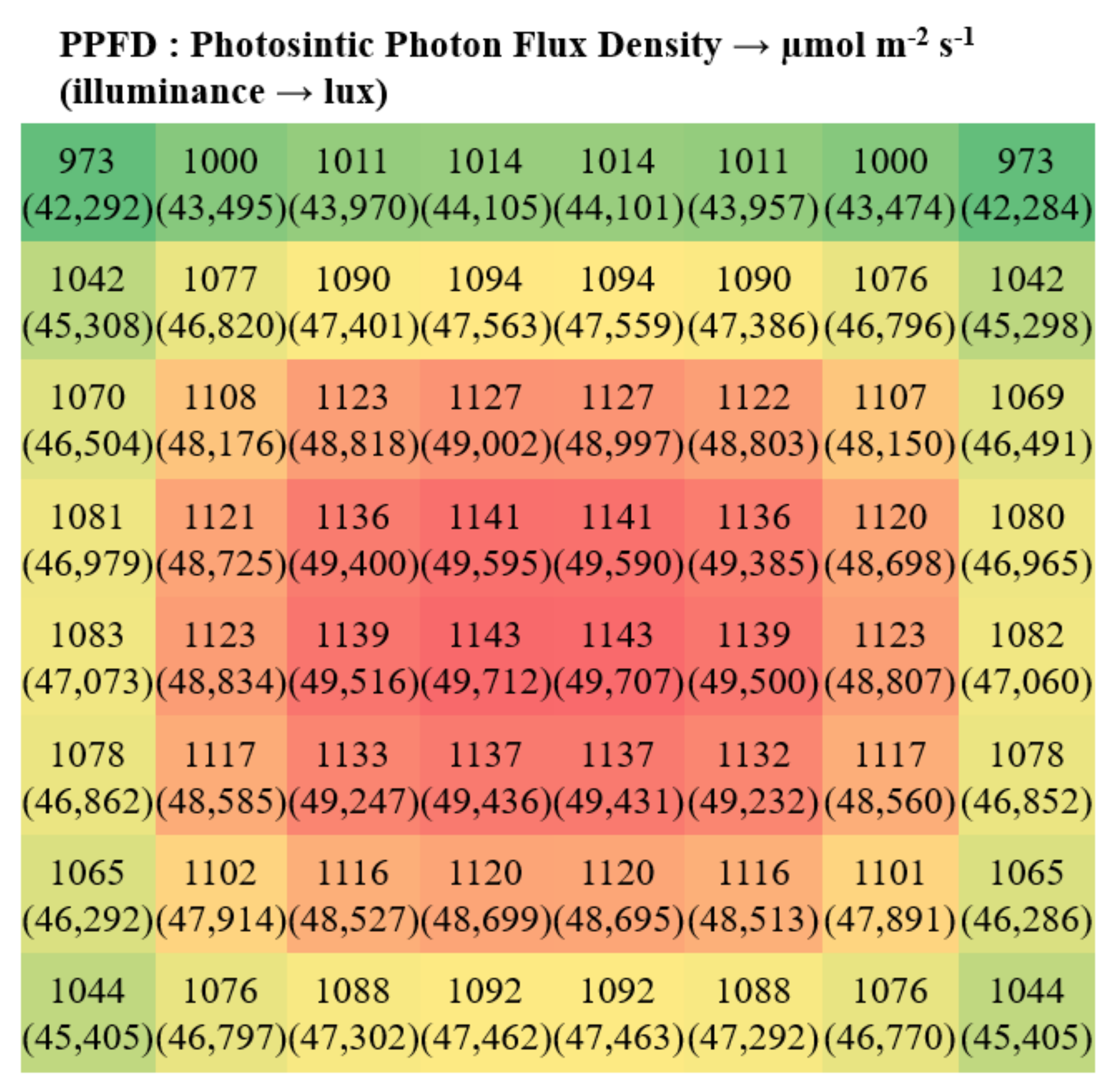
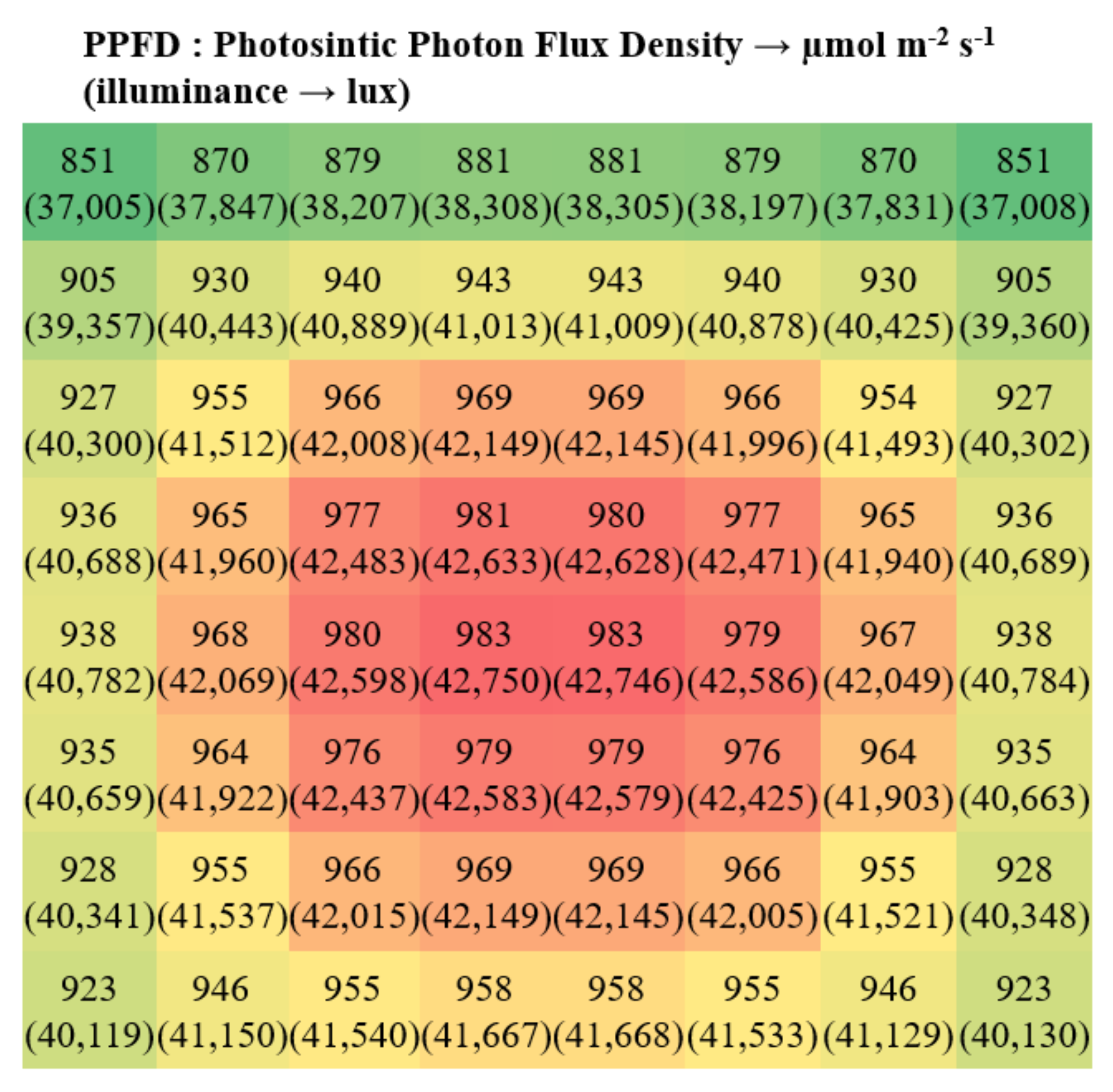
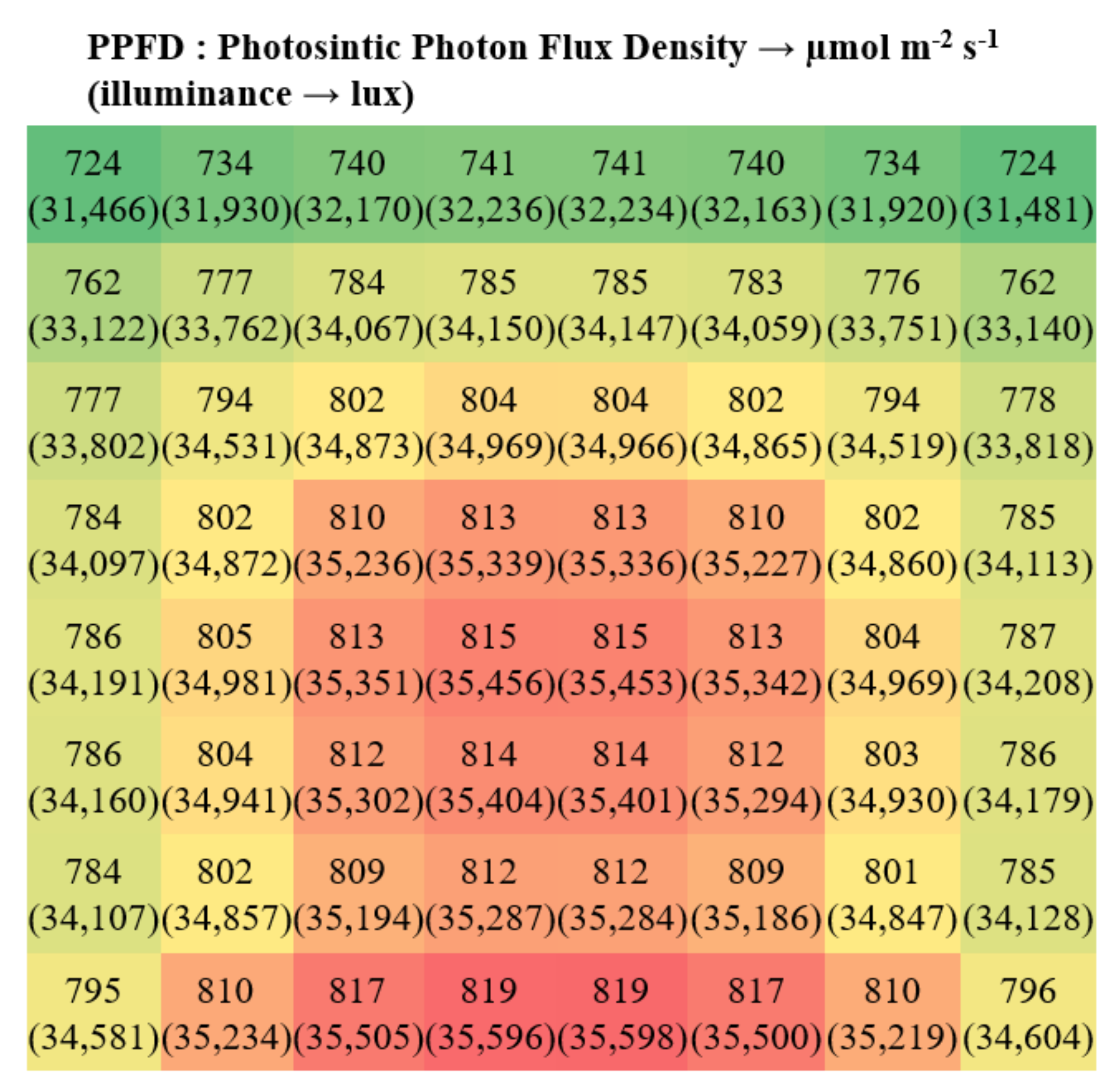

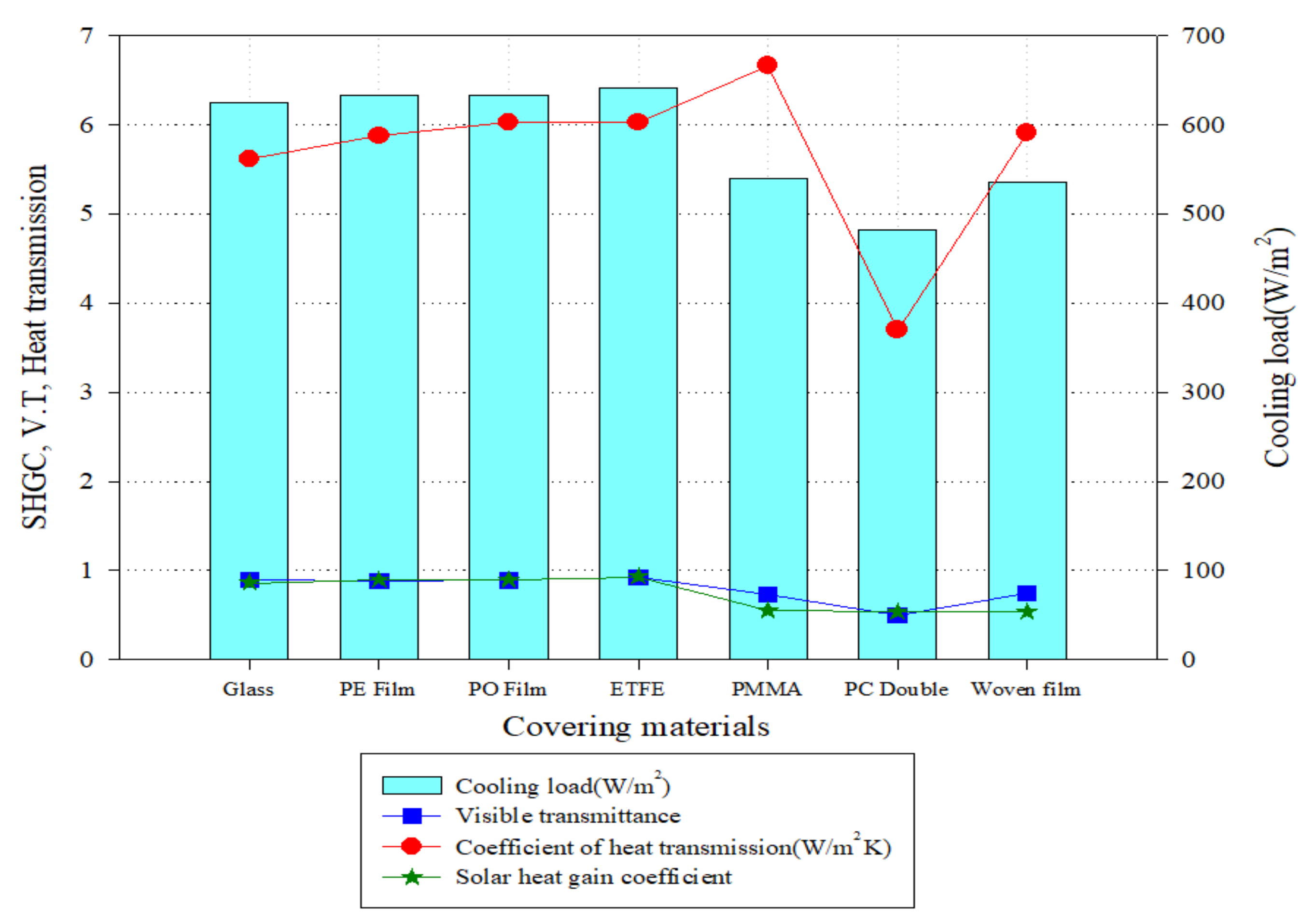
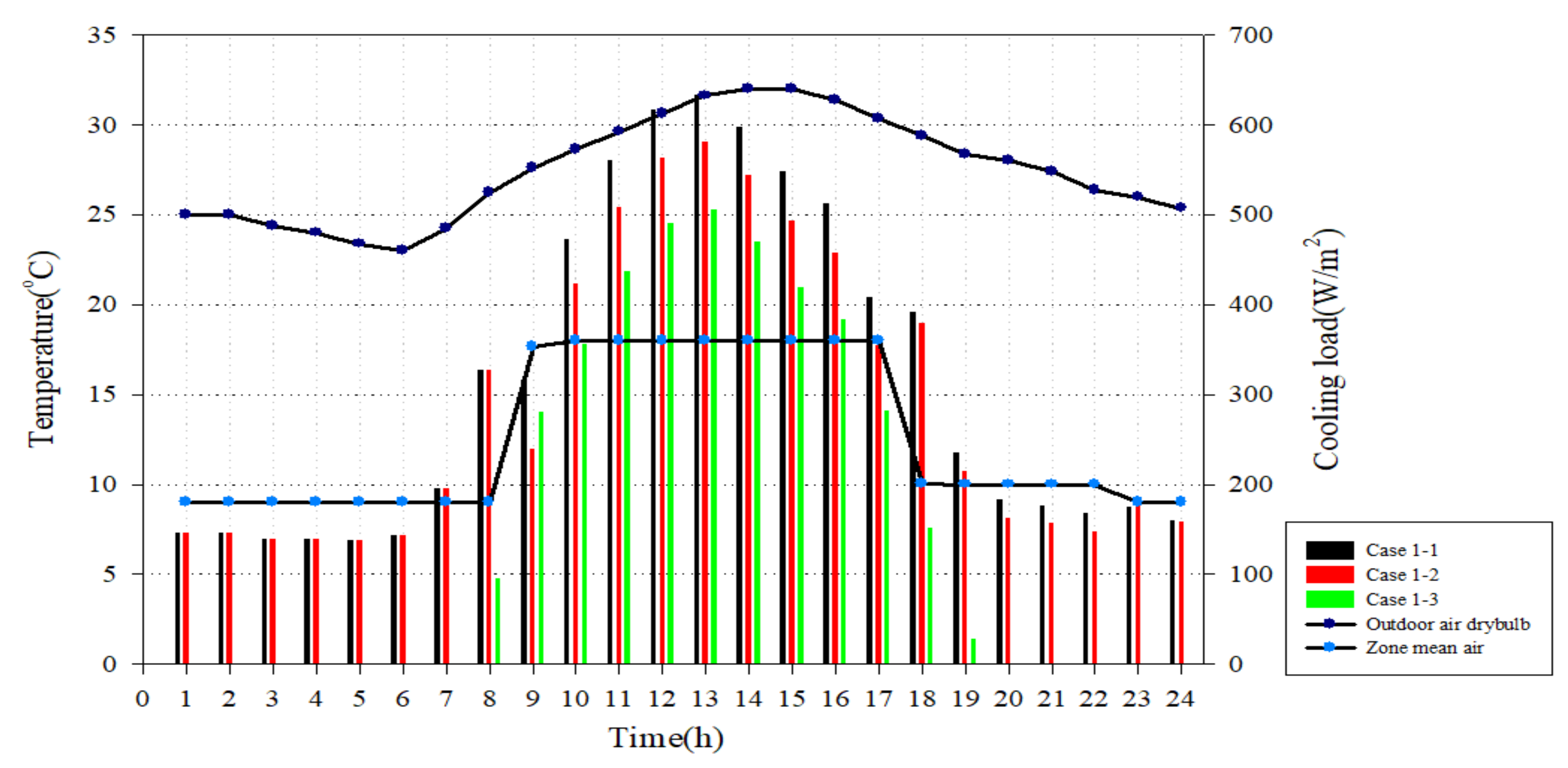

| Measure Items | Characteristics |
|---|---|
| Glass |
|
| PE Film |
|
| PO Film |
|
| ETFE |
|
| PMMA |
|
| PC Double-Layer |
|
| Woven film |
|
| Visible Light | SHGC | Thermal Transmittance | |
|---|---|---|---|
| Single material | KS L 2514 | KS L 2514 | KS L 2525 (Glass) KS L 2016 (Film) |
| Composite material | KS L 2514 | KS L 9107 | KS L 9016 |
| Division | Agency | Standard | Remarks |
|---|---|---|---|
| USA | ASABE | ASABE EP 460 (Commercial Greenhouse Design and Layout) ASABE EP 406 (Heating, Ventilating and Cooling Greenhouses) | |
| ASHRAE | ASHRAE Applications Handbook Chapter 24 (Environmental Control for Animals and Plants) | ||
| NGMA | Standards and guidelines | ||
| Japan | JGHA | Handbook of protected horticulture | |
| China | Chinese national standard (GuojiaBiaozhun) | GB/T 18621-2002 (Design regulation on greenhouse ventilation and cooling) |
| Category | Contents |
|---|---|
| Area | Cultivation room: 1008 m2 (31.5 m (W) × 32 m (L)) |
| Height and slope of roof | 7.2 m (side height: 6 m), 25° |
| North axis | 124 (North-west) |
| Shading | Internal shading |
| Bed | Hanging-gutter system |
| Weather data | Jeollanam-do Muan |
| Crop | Strawberry |
| Materials | Thickness (mm) | Visible Transmittance | Solar Heat Gain Coefficient | Coefficient of Heat Transmission (W/m2∙K) |
|---|---|---|---|---|
| Glass | 3.9 | 0.895 | 0.86 | 5.62 |
| PE film | 0.090 | 0.884 | 0.90 | 5.88 |
| PO film | 0.146 | 0.890 | 0.90 | 6.03 |
| ETFE | 0.097 | 0.923 | 0.93 | 6.03 |
| PMMA | 16.1 | 0.732 | 0.55 | 6.67 |
| PC double layer | 5.9 | 0.496 | 0.54 | 3.70 |
| Woven film | 0.212 | 0.747 | 0.54 | 5.91 |
| Cases | Control Strategies |
|---|---|
| Case 1-1 | Cooling setpoint 8:00~17:00 18 °C/17:00~22:00 10 °C/22:00~08:00 9 °C |
| Case 1-2 | Cooling setpoint 8:00~17:00 23 °C/17:00~22:00 12 °C/22:00~08:00 9 °C |
| Case 1-3 | Cooling setpoint all time 30 °C |
| Case 2-1 | No shading |
| Case 2-2 | Internal shading 40% |
| Case 2-3 | Internal shading 50% |
| Case 2-4 | Internal shading 60% |
| Test Item | Unit | Result | ||||||
|---|---|---|---|---|---|---|---|---|
| Glass | PE | PO | ETFE | PMMA | PC Double | Woven | ||
| Visible Light Transmittance | % | 89.5 ± 0.1 | 88.4 ± 0.1 | 89.0 ± 0.1 | 92.3 ± 0.1 | 73.2 ± 0.1 | 49.6 ± 0.1 | 74.7 ± 0.1 |
| Visible Light Reflectivity | % | 7.6 ± 0.1 | 8.2 ± 0.1 | 8.1 ± 0.1 | 6.6 ± 0.1 | 23.0 ± 0.1 | 23.7 ± 0.1 | 22.4 ± 0.1 |
| Solar Radiation Transmittance | % | 82.5 ± 0.1 | 89.6 ± 0.1 | 89.4 ± 0.1 | 92.5 ± 0.1 | 70.8 ± 0.1 | 51.3 ± 0.1 | 76.3 ± 0.1 |
| Solar Radiation Reflectivity | % | 7.1 ± 0.1 | 7.9 ± 0.1 | 7.7 ± 0.1 | 6.7 ± 0.1 | 22.8 ± 0.1 | 22.2 ± 0.1 | 19.9 ± 0.1 |
| Thickness | mm | 3.9 | 0.090 | 0.146 | 0.097 | 16.1 | 5.9 | 0.212 |
| Test Item | Unit | Result | ||||||
|---|---|---|---|---|---|---|---|---|
| Glass | PE | PO | ETFE | PMMA | PC Double | Woven | ||
| Coefficient of heat transmission | 5.62 ± 0.1 | 5.88 ± 0.1 | 6.03 ± 0.1 | 6.03 ± 0.1 | 6.67 ± 0.1 | 3.70 ± 0.1 | 5.91 ± 0.1 | |
Publisher’s Note: MDPI stays neutral with regard to jurisdictional claims in published maps and institutional affiliations. |
© 2021 by the authors. Licensee MDPI, Basel, Switzerland. This article is an open access article distributed under the terms and conditions of the Creative Commons Attribution (CC BY) license (https://creativecommons.org/licenses/by/4.0/).
Share and Cite
Park, D.-Y.; Lee, H.-J.; Yun, S.-I.; Choi, S.-M. Simulation Analysis of Daylight Characteristics and Cooling Load Based on Performance Test of Covering Materials Used in Smart Farms. Energies 2021, 14, 6331. https://doi.org/10.3390/en14196331
Park D-Y, Lee H-J, Yun S-I, Choi S-M. Simulation Analysis of Daylight Characteristics and Cooling Load Based on Performance Test of Covering Materials Used in Smart Farms. Energies. 2021; 14(19):6331. https://doi.org/10.3390/en14196331
Chicago/Turabian StylePark, Doo-Yong, Hyun-Je Lee, Su-In Yun, and Sang-Min Choi. 2021. "Simulation Analysis of Daylight Characteristics and Cooling Load Based on Performance Test of Covering Materials Used in Smart Farms" Energies 14, no. 19: 6331. https://doi.org/10.3390/en14196331
APA StylePark, D.-Y., Lee, H.-J., Yun, S.-I., & Choi, S.-M. (2021). Simulation Analysis of Daylight Characteristics and Cooling Load Based on Performance Test of Covering Materials Used in Smart Farms. Energies, 14(19), 6331. https://doi.org/10.3390/en14196331







